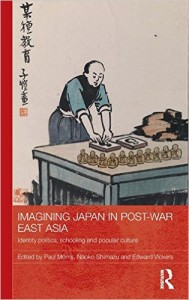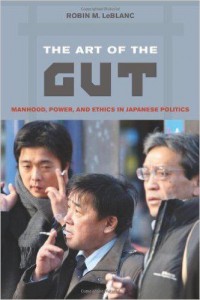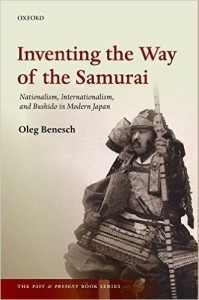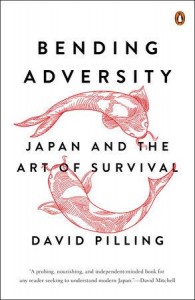- Japanese Culture and Society
Morris,Paul., Vickers,Edward., and Shimazu,Naoko. (2014). Imagining Japan in Post-war East Asia: Identity Politics, Schooling and Popular Culture. Routledge Studies in Education and Society in Asia: Routledge.
The book analyses the portrayal of Japan in the societies of East and Southeast Asia, and asks how and why this has changed in recent decades, and what these changing images of Japan reveal about the ways in which these societies construct their own identities.
 Kitanaka, Junko. (2011). Depression in Japan: Psychiatric Cures for a Society in Distress. Princeton University Press.
Kitanaka, Junko. (2011). Depression in Japan: Psychiatric Cures for a Society in Distress. Princeton University Press.
Since the 1990s, suicide in recession-plagued Japan has soared, and rates of depression have both increased and received greater public attention. The author looks at how Japanese psychiatrists now use the discourse of depression to persuade patients that they are victims of biological and social forces beyond their control; analyzes how this language has been adopted in legal discourse surrounding “overwork suicide”; and considers how, in contrast to the West, this language curiously emphasizes the suffering of men rather than women.
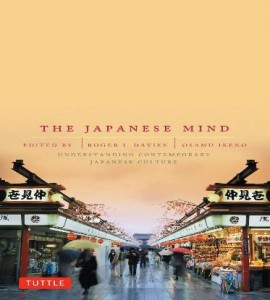 Davies, J. Roger., and Ikeno, Osamu. (2002). The Japanese Mind: Understanding Contemporary Japanese Culture. Tuttle Publishing.
Davies, J. Roger., and Ikeno, Osamu. (2002). The Japanese Mind: Understanding Contemporary Japanese Culture. Tuttle Publishing.
This book is an easy-to-use introduction to the distinguishing characteristics of Japanese society; an invaluable resource for anyone—business people, travelers, or students—perfect for course adoption, but also for anyone interested in Japanese culture.
Tamaki, Saito. (2013). Hikikomori: Adolescence without End. University of Minnesota Press.
Since Hikikomori was published in Japan in 1998, the problem of social withdrawal has increasingly been recognized as an international one, and this translation promises to bring much-needed attention to the issue in the English-speaking world. Drawing on his own clinical experience with hikikomori patients, Saito creates a working definition of social withdrawal and explains its development.
- Japanese Politics
LeBlanc, Robin M. (2009). The Art of the Gut: Manhood, Power, and Ethics in Japanese Politics. University of California Press.
This beautifully written ethnography follows the lives of two very different Japanese men entering political life in two very different communities. One is the rural leader of a citizens’ referendum movement, while the other hopes to succeed his father in a Tokyo ward assembly.
Robin M. Le Blanc is also the author of Bicycle Citizens: The Political World of the Japanese Housewife (UC Press).
Samuels,J. Richard. (2007). Securing Japan: Tokyo’s Grand Strategy and the Future of East Asia. Cornell Studies in Security Affairs): Cornell University Press.
Securing Japan begins by tracing the history of Japan’s grand strategy—from the Meiji rulers, who recognized the intimate connection between economic success and military advance, to the Konoye consensus that led to Japan’s defeat in World War II and the postwar compact with the United States.
Benesch, Oleg. (2014). Inventing the Way of the Samurai: Nationalism, Internationalism, and Bushido in Modern Japan. The Past & Present Book Series): Oxford University Press.
The book examines the development of the “way of the samurai” – bushido – which is popularly viewed as a defining element of the Japanese national character and even the “soul of Japan”. Rather than a continuation of ancient traditions, however, bushido developed from a search for identity during Japan’s modernization in the late nineteenth century.
- Japanese Economy

Francks, Penelope. (2009). The Japanese Consumer: An Alternative Economic History of Modern Japan. Cambridge University Press.
Penelope Francks’ book offers an alternative account of Japan’s modern economic history from the perspective of the consumer. Tracing Japan’s economy from the eighteenth century to the present, she shows how history has conditioned what Japanese people consume and compares their experiences with those of Europe and North America.
David, Pilling. (2014) Bending Adversity: Japan and the Art of Survival. Penguin Press HC.
Pilling’s exploration begins with the 2011 triple disaster of earthquake, tsunami, and nuclear meltdown. His deep reporting reveals both Japan’s vulnerabilities and its resilience and pushes him to understand the country’s past through cycles of crisis and reconstruction.
- Japanese History
 Tsunetomo, Yamamoto., and Bennett, Alexander. (2014). Hagakure: The Secret Wisdom of the Samurai. Tuttle Publishing.
Tsunetomo, Yamamoto., and Bennett, Alexander. (2014). Hagakure: The Secret Wisdom of the Samurai. Tuttle Publishing.
The Hagakure is one of the most influential of all Japanese texts—written nearly 300 years ago by Yamamoto Tsunetomo to summarize the very essence of the Japanese Samurai bushido (“warrior”) spirit. Its influence has been felt throughout the world and yet its existence is scarcely known to many Westerners.
 Jansen, Marius B. (2002). The Making of Modern Japan. Harvard University Press.
Jansen, Marius B. (2002). The Making of Modern Japan. Harvard University Press.
Jansen covers the making of the modern state, the adaptation of Western models, growing international trade, the broadening opportunity in Japanese society with industrialization, and the postwar occupation reforms imposed by General MacArthur. Throughout, the book gives voice to the individuals and views that have shaped the actions and beliefs of the Japanese, with writers, artists, and thinkers, as well as political leaders given their due.


